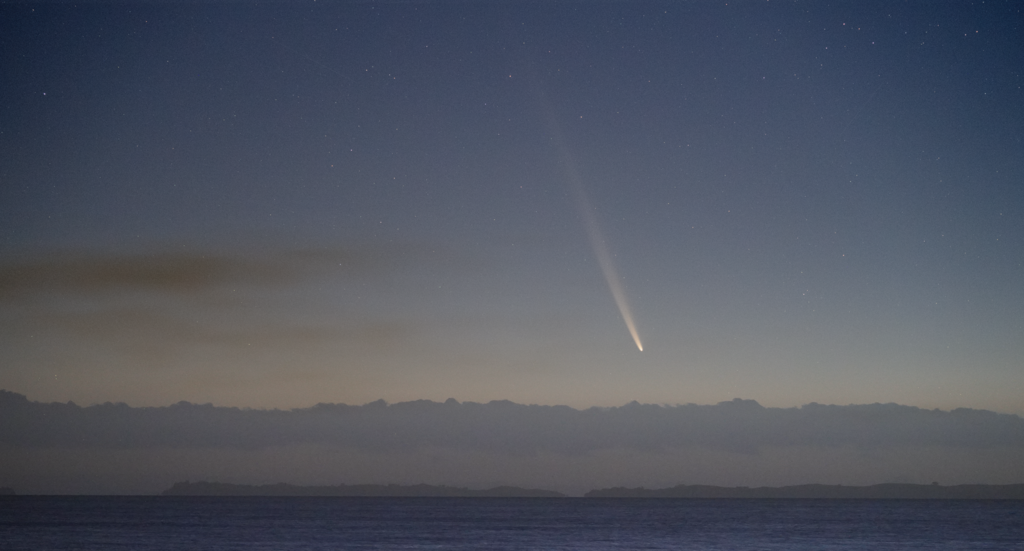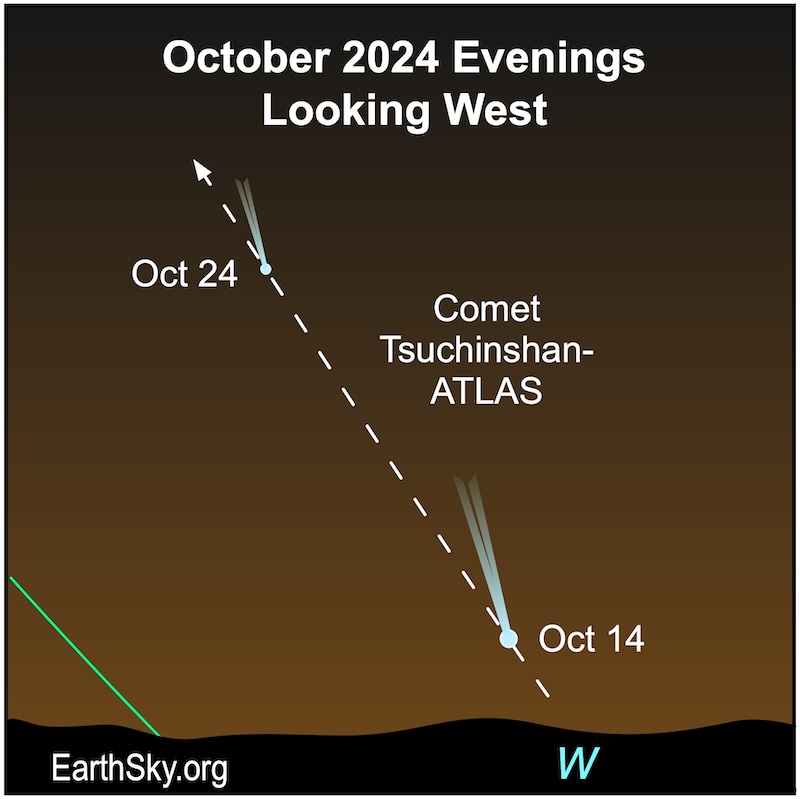
You may have seen some photos of Comet C/2023 A3, also known as Comet Tscuchisnshan-ATLAS, gracing the morning skies in the past week.
It has already put on quite the show across the globe but has so far been located near the horizon in the mornings. In the past few days, the head of the comet has dipped below the horizon from our standpoint as it begins to shift from a morning to evening object and pass roughly between us and the sun.
The comet was discovered last January by the Purple Mountain Observatory in China and then a short time later by the ATLAS observatory in South Africa, hence the name (Tsuchinshan-ATLAS is in honor of both observatories since Tsuchinshan means “purple mountain” in Mandarin.)
The comet made and survived its closest approach to the sun last week, just inside the average orbit of Mercury. During this time, it has brightened significantly.

Comet will soon grace the evening sky
After appearing in the morning sky for the past week, it will soon grace the evening sky starting on October 14th.
A skilled observer may be able to see the comet in broad daylight next Wednesday, October 9th. Forward scattering of light as the comet passes between us and the sun could cause the brightness to spike significantly, making it briefly visible close to the sun in broad daylight.
Observing it may be challenging, but Now Habersham will update you on the best practices as we get closer.
From mid-month onward, the comet is expected to appear quite bright in the western sky for about two weeks. The image below from EarthSky.org shows where to find the comet during this time.
The comet already has a well-developed, long tail, and with some luck, it will put on quite a show for us.

Get your cameras ready, and watch the skies!






